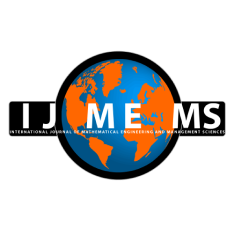Neha Patel
Subir Chowdhury School of Quality and Reliability, Indian Institute of Technology, Kharagpur, West Bengal, India.
Rajiv Nandan Rai
Subir Chowdhury School of Quality and Reliability Engineering, Indian Institute of Technology, Kharagpur, West Bengal, India.
Harshal Patil
Subir Chowdhury School of Quality and Reliability Engineering, Indian Institute of Technology, Kharagpur, West Bengal, India.
Prakhar Shrivastava
Subir Chowdhury School of Quality and Reliability Engineering, Indian Institute of Technology, Kharagpur, West Bengal, India.
DOI https://doi.org/10.33889/IJMEMS.2024.9.4.039
Abstract
In manufacturing industries, reliability analysis of cutting tools is of paramount importance, as their frequent failures may result in enhanced downtime of production lines, leading to reduced throughput, enhanced process cycle times, and low profits. There are numerous factors that govern the desired operations of cutting tools, e.g., tool cutting speed, feed, depth of cut, and many others. Existing literature on cutting tools’ reliability estimation emphasizes mainly three variables, as mentioned earlier while neglecting other important factors. Including a greater number of factors in the process of estimating reliability increases the number of covariates, hence rendering the data acquisition costlier and estimation models highly complex. This work initially utilizes Analytical Hierarchy Process (AHP) to assess the importance of various factors that are responsible for the cutting tool’s performance, followed by the reliability estimation of the cutting tools using proportional hazards model (PHM) considering the four “critical to reliability” factors as obtained through AHP as covariates. The proposed method also helps in determining the relationship of these sub-factors with the hazard rate and reliability of the cutting tools. Experimental results are then used to verify the model’s predictions through response surface methodology (RSM) and Weibull fit. Furthermore, the paper also presents a proposed technique to estimate the required number of cutting tools for one machine per day and the number of job completions that can be an essential takeaway for various industries. Thus, this research paper proposes an integrated AHP-RSM-PHM based approach for a comprehensive reliability analysis of cutting tools.
Keywords- Cutting tools, Reliability, Analytic hierarchy process, Proportional hazard model, Response surface methodology.
Citation
Patel, N., Rai, R. N. Patil, H., & Shrivastava, P. (2024). Reliability Analysis of Cutting Tools for Industrial Applications: An Integrated AHP-RSM-PHM Approach. International Journal of Mathematical, Engineering and Management Sciences, 9(4), 756-778. https://doi.org/10.33889/IJMEMS.2024.9.4.039.



